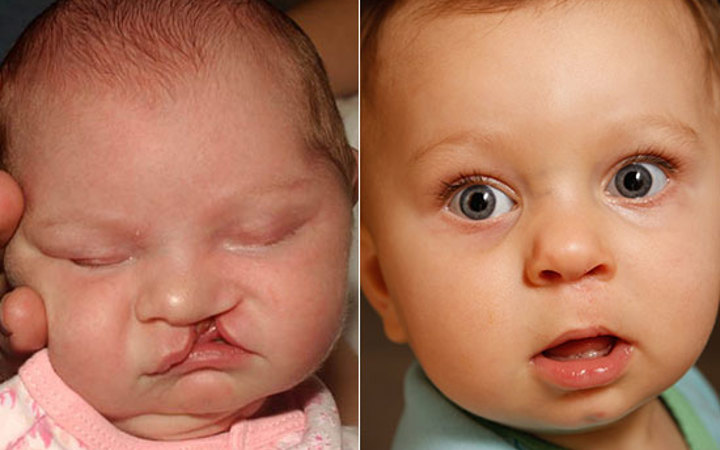Cleft Lip Surgery Craniofacial - Abu Dhabi - Dubai
Cleft lip and palate surgery is a medical procedure performed to correct congenital deformities in the lip and/or palate. A cleft lip is a condition where there is a split or gap in the upper lip, while a cleft palate refers to a split or opening in the roof of the mouth. These conditions occur during fetal development when the facial structures do not fuse properly.
Cleft lip and palate surgeries are typically done in multiple stages and may involve a team of medical professionals, including plastic surgeons, oral and maxillofacial surgeons, and otolaryngologists. The goal of the surgery is to repair the cleft and restore normal function and appearance to the affected areas
The timing of the surgeries may vary depending on the individual case, but they are usually performed within the first 12 to 18 months of a child's life. Early intervention is important to address feeding difficulties, speech development, and overall facial growth.
Here is a general overview of the surgical procedures involved in treating cleft lip and palate:
- 1. Cleft lip repair: This procedure is typically performed when the child is around 3 to 6 months old. The surgeon makes incisions on both sides of the cleft and then carefully realigns and sutures the tissues, creating a more natural-looking lip.
- 2. Cleft palate repair: Palate repair is usually done when the child is between 6 and 18 months old. The surgeon makes incisions on either side of the cleft, repositions the tissues, and then closes the opening in the palate. This helps restore the separation between the oral and nasal cavities, improving feeding, speech, and preventing ear infections.
- 3. Follow-up surgeries: In some cases, additional surgeries may be needed as the child grows to improve speech, correct dental issues, or address any residual deformities. These surgeries are typically planned based on the individual's needs and are often performed during the school-age years and adolescence.
Cleft lip and palate surgeries are generally safe, but as with any surgery, there are potential risks and complications. These may include infection, bleeding, scarring, asymmetry, impaired healing, or adverse reactions to anesthesia. It's important to discuss these risks with the surgical team and follow their post-operative care instructions for optimal recovery.
In addition to surgery, individuals with cleft lip and palate may require ongoing multidisciplinary care, including dental treatments, speech therapy, and psychological support. This comprehensive approach aims to address the functional, aesthetic, and emotional aspects of living with a cleft lip and palate

